
Annual Forbs Around Las Vegas, Vegetation Around Las Vegas
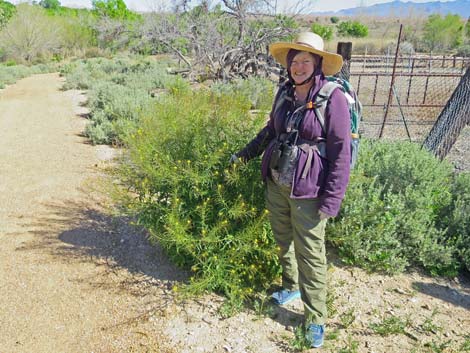 The plant can grow tall and bushy |
General: London Rocket Mustard (Sisymbrium irio) is an annual forb with basal leaves, several flowering stalks, and tiny, yellow, 4-petaled flowers. The basal leaves are dissected with 6-14 pairs of lateral lobes, and the terminal lobe is about the size of lateral lobes. New seed pods overtop new flowers. The plant dies after it flowers, leaving open, upright stalks that are highly flammable. London Rocket Mustard is an uncommon component of disturbed desert vegetation communities. Around Las Vegas, look for this species in town and in disturbed roadsides and open fields. This is a fairly recent addition to our local flora. The name "rocket' is appropriate because it grows and spreads rapidly. Family: Mustard (Brassicaceae). Other Names: Desert Mustard Plant Form: Plants remain as rosettes until they develop flowering stems at maturity. Basal leaves with upright, leafy flower stalks. |
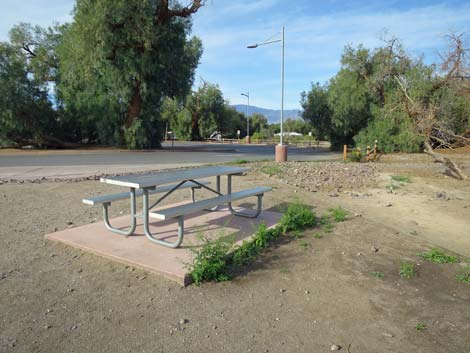 Typical habitat |
Height: To about 3 feet. Stems: Several flowering stalks mostly originating near the base. Stems glabrous or sparsely hairy; without stiff hairs. Leaves: Generally basal; generally broad and dissected (pinnately lobed) with 6-14 pairs of lateral lobes; terminal lobe about the size of lateral lobes. Upper leaves are smaller and oblong (not lobed). Flowers: Blooms during early spring. Flowers clustered at the top of the flower stalks; petals 4, yellow. Petals short and narrow (less than 4 mm long, 1-1.5 mm wide). Sepals about 2 mm long. Fruit: Long (30–40 mm), narrow pod (cylindrical silique), constricted between seeds, remains green when ripe; seeds 40–90. New pods overtop flowers. Spreading from stem. Pedicels narrower than fruit. |
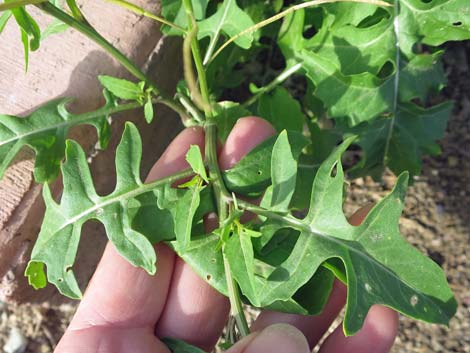 Lobed lower leaves |
Seeds: Tiny (1-mm wide), oblong. Habitat: Roadsides, picnic areas, disturbed sites; spreading into undisturbed desert sites. Elevation: To about 3,000 feet (<1500 m); usually lower elevations. Distribution: California to Texas and south into Mexico. Native to the Mediterranean region. Comments: This species is similar to Black Mustard and Sahara Mustard. The leaves, seeds, and flowers are edible when young, with a spicy flavor |
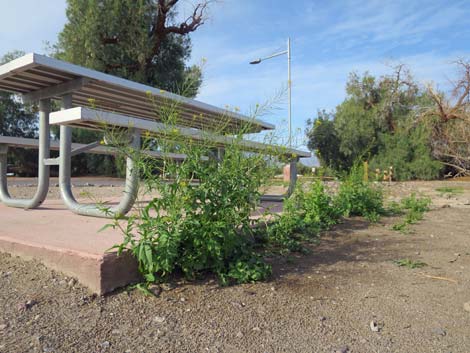 Plant form in typical habitat |
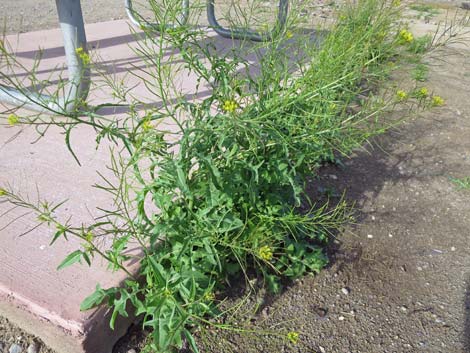 Plant form |
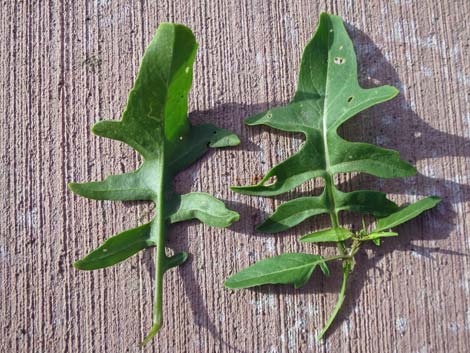 Lower leaves, ventral (left) and dorsal surfaces (right) |
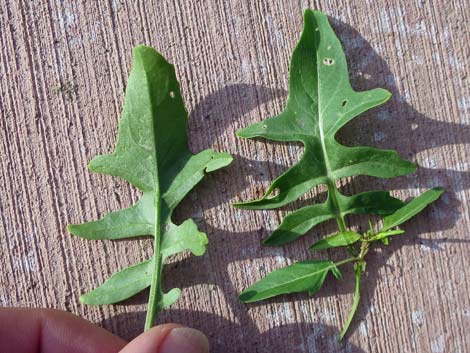 Lower leaves, ventral (left) and dorsal surfaces (right) |
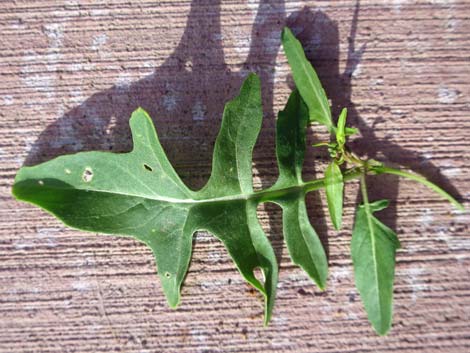 Lower leaves, dorsal surface |
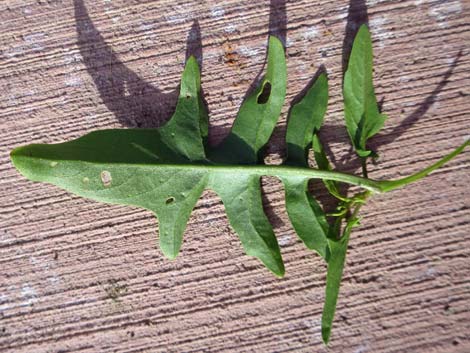 Lower leaves, ventral surface |
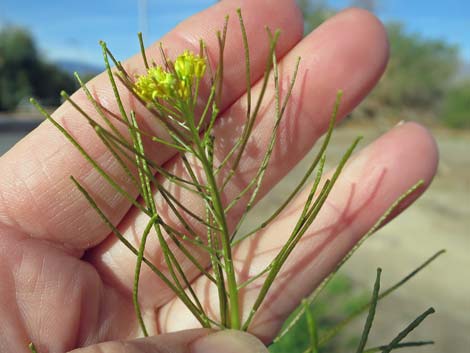 Tip of flowering stalk with open flowers and ripening seed pods |
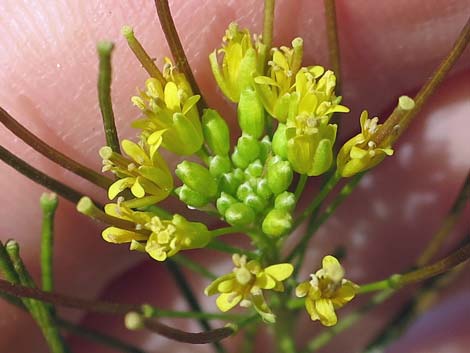 Tip of flowering stalk with yellow, 4-petaled flowers |
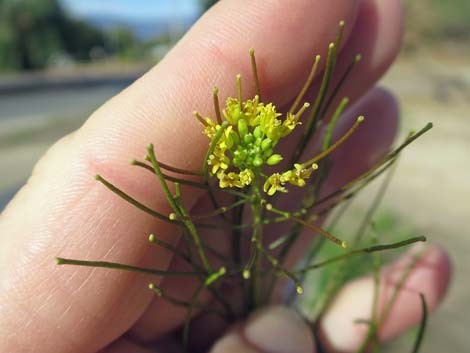 Tip of flowering stalk with open flowers and ripening seed pods |
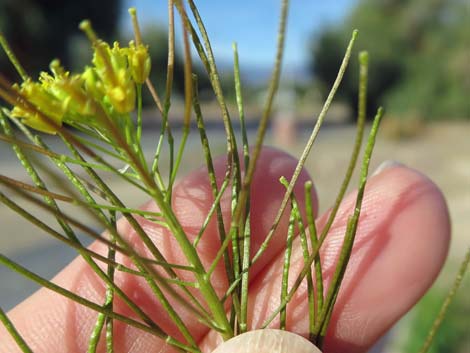 Seedpods overtop flowers |
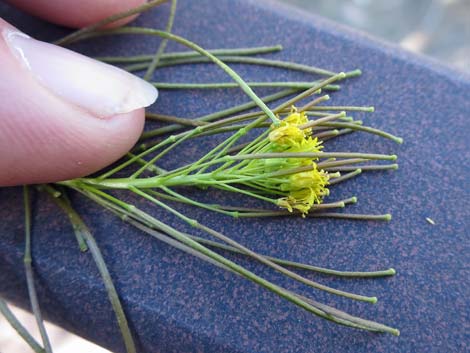 |
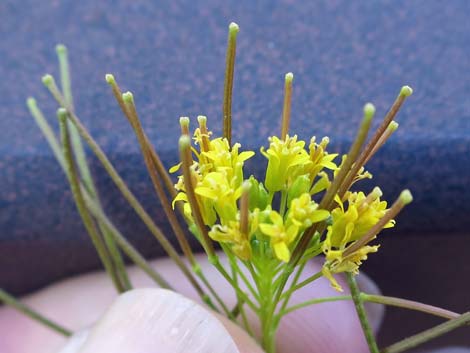 |
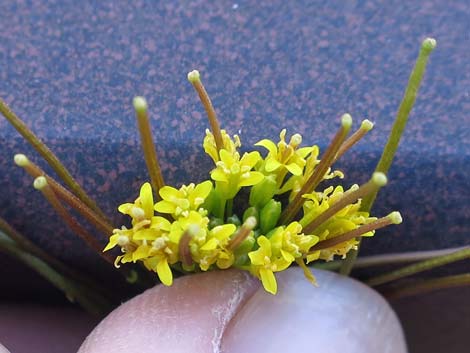 Tiny yellow, 4-petaled flowers |
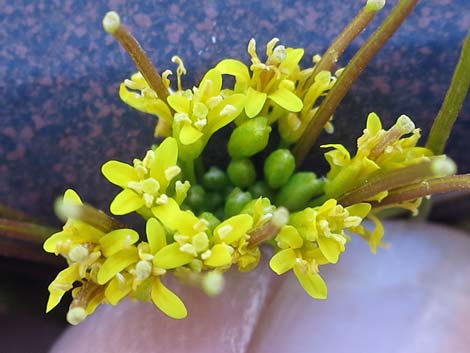 Tiny yellow, 4-petaled flowers |
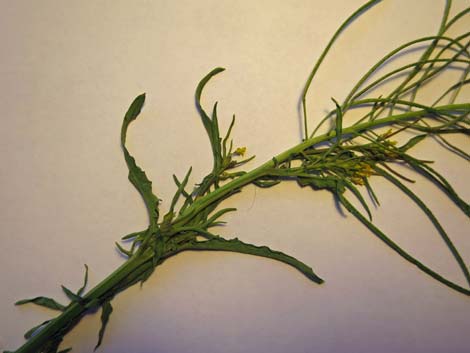 |
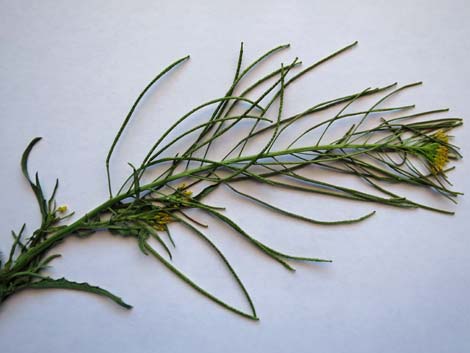 |
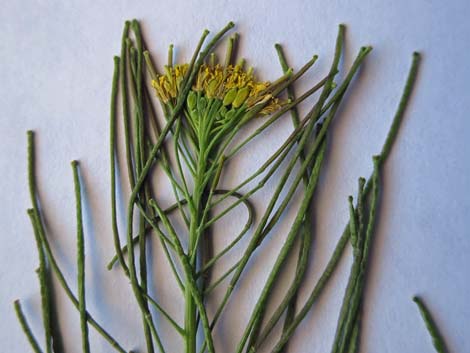 |
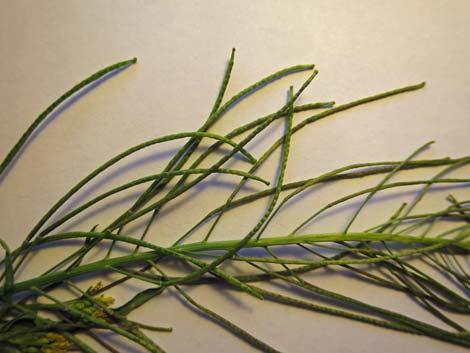 |
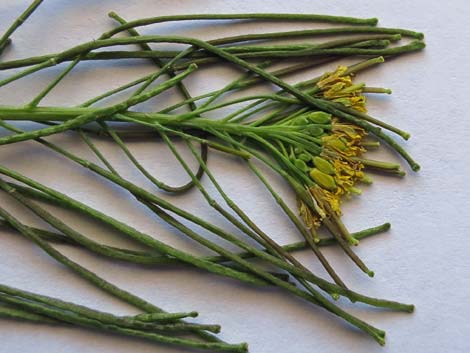 Tip of the flowering stalk (pressed) |
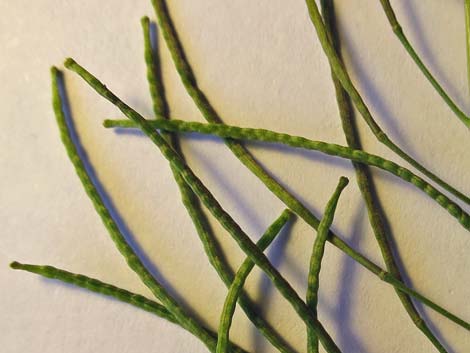 Seed pods show a constriction between each seed |
Note: All distances, elevations, and other facts are approximate. Names generally follow the USDA database.
![]() ; Last updated 190508
; Last updated 190508
| All Annual Forbs | Plant Species Index | Glossary | Copyright, Conditions, Disclaimer | Home |